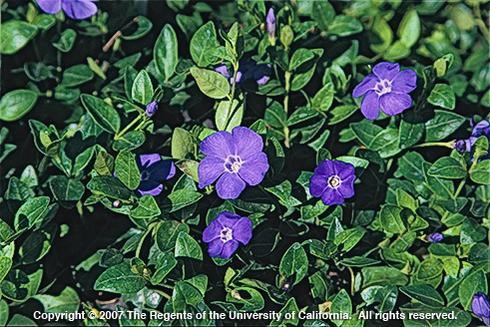Posts Tagged: invasive plants
Invasives
I recently passed through the Russian River watershed area of Sonoma County. It’s a beautiful drive through Forestville, Guerneville, Monte Rio and Duncan’s Mills, all the way to the river’s mouth at Jenner, and then north to Gualala. But something was amiss, besides the dreadfully low water level of the river itself.
The sheer volume of invasive plants I saw all along the way startled me. It’s an eyeful, to say the least: Yellow-blooming broom, climbing ivy and periwinkle, and huge stands of arundo and acacias in the more protected areas around the river, and widespread bunches of pampasgrass thriving along the coast, fully exposed to the wind and salty air.
On the return trip, I kept an eye out for invasive plants in our area. The obvious offender: Yellow starthistle (Centaurea solstitialis), which is all over the hills of Solano County. It has been a longtime problem, especially for our local farmers and ranchers. I know there are other invaders, tucked into the nooks and crannies and creek beds. On a long ago hike at Lake Solano Park, near Winters, I came across and huge stand of spearmint. How the heck did THAT get there?
This sent me to the Internet to see what else has invaded. The answer: A bunch. See for yourself. One web site was particularly helpful, calflora.org. I highly recommend a visit there. The California Invasive Plant Council (CIPC) also maintains a very helpful web site.
So what did I come away with? Home gardeners need to be responsible for what we choose to plant. That requires some research on our part. Gardeners can unknowingly choose to plant invasives, such as Scotch broom (Cytisus scoparius), big periwinkle (Vinca major) and Algerian or English ivy, which are readily available in local nurseries. These and other plants can escape into wild, and “displace native plants and wildlife, increase wildfire and flood danger, consume valuable water, degrade recreational opportunities, and destroy productive range and timber lands,” as stated on the California Invasive Plant Council web site.
Bottom line: Plant responsibly. There is a very helpful, area-specific “Don’t Plant a Pest” program maintained by the CIPC. Check it out before you go plant shopping.
* * *
For those of us who grow tomatoes, the threat of late blight is quite real. This is especially true in the cooler, moister areas in the southern reaches of Solano County. The San Francisco Chronicle’s “Golden Gate Gardener,” Pam Peirce, is conducting research on late blight in the Bay Area, and you can get involved. Check it out.

Yellow starthistle.

Vinca major.

